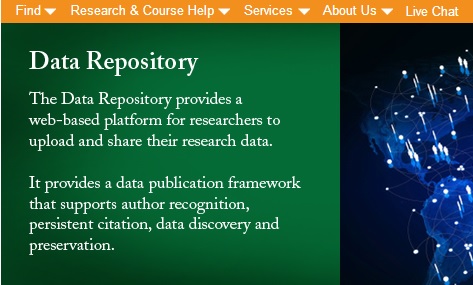Digital Library II
A Digital Library Part II – How?
By Mark Sivy
The following are considerations to be made when planning a digital library. Even though this post provides a basic set of guidelines and information for establishing a digital library, the final details will depend upon the actual planning and development process for a given digital library and will be determined by its target audience and needs.
1. Who Are the Patrons?
It is of great importance at the onset of the project to define the target users of a digital library. Once these users and their communities are identified, it is then essential to establish their needs, abilities, and access related to the library.
2. Collaboration
For the library concept to develop and eventually succeed it is essential to identify stakeholders and collaborators who will be instrumental in establishing and maintaining the library and in developing and applying the criteria for content inclusion and to acquire the holdings.
3. Operating and Managing
Determine the organization structure, operation, and sustainability of the library.
4. Digital Library Technologies
Identify and address issues related to the digital existence and operations of the digital library. This includes such considerations as hardware, software, meta-data structure, and converting non-digital media to digital media.
5. Accessibility and Usability
Identify and address issues related to the usability of the library including functionality issues, the user interface, the user experience, and policies that govern the use of a digital library.
6. The Content
Decide upon the content and the materials to be contained in the digital library.
7. Maintenance
Determine what is needed for the short-term and long-term upkeep of the digital library.
8. Legal Concerns
Define and address the legal implications of providing materials in the library including copyrights, intellectual property rights, and fair use of materials
9. Access and Security
Incorporates the issues to be addressed when determining who will access the library, how they will access it, and what security needs to be considered to safeguard the library and its patrons.
10. Support
Support requirements and mechanisms for the digital library and its patrons.
11. Professional Development and Training
Identify library staff and patron development and learning needs.
12. Communications / Media
Establish the means for internal and external communications such as announcements, notifications, contacts, discussions and feedback.
13. Cost Implications
Identify the key factors affecting the cost of developing and maintaining a digital library.
14. Outreach
Create a social media plan, a marketing strategy and external partnerships.
Reflection Point – A library is not a luxury, but of the necessities of life. ~Henry Ward Beecher
Parts of this post are based upon the Joint United Nations recent Programme on HIV/AIDS (2010) publication Planning Tool for Developing a Digital Library of Monitoring and Evaluation Resources.

